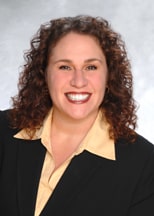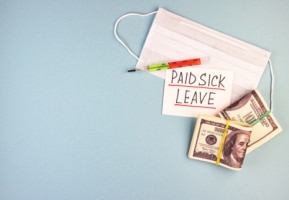By:
Jaimee K. Wellerstein, Esq.
and
Saba Zafar, Esq.
As previously reported here, California’s Legislature recently proposed a new COVID-19 Supplemental Paid Sick Leave (“SPSL”) for 2022. On February 9, 2022, Governor Gavin Newsom signed the new SPSL bill into law. The law goes into effect on February 19, 2022.
The new SPSL, Senate Bill 114 (“SB 114”) which is codified in California Labor Code Section 248.6, is retroactive to January 1, 2022, and extends until September 30, 2022. Like its predecessor, the new law provides up to 80 hours of SPSL for full-time employees. There are, however, some important differences in the 2022 version.
Which Employers Are Covered By the New SPSL?
Employers with 26 or more employees are subject to the new SPSL law. The 2022 law does not apply to employers with 25 or fewer employees.
What Employees Are Eligible for the New SPSL?
Employers must provide SPSL if the employee is unable to work or telework due to any of the following reasons:
- The employee or family member is subject to a quarantine or isolation period related to COVID-19.
- The employee or family member has been advised by a health care provider to isolate or quarantine due to COVID-19.
- Employee or family member is attending an appointment to receive a COVID-19 vaccine or booster.
- Employee or family member is experiencing symptoms related to a COVID-19 vaccine or booster that prevents the employee from being able to work or telework.
- The employee is experiencing symptoms of COVID-19 and seeking a medical diagnosis.
- The employee is caring for a child whose school or place of case is closed or otherwise unavailable for reasons related to COVID-19 on the premises.
- If the employee, or a family member for whom the employee is providing care, tests positive for COVID-19. (Note: employer may condition payment of supplemental paid sick leave for this reason upon the employee providing a positive test for themselves or the family member they are caring for.)
How Much SPSL Are Employees Entitled To In 2022?
There are two buckets of leave available to covered employees, each allowing for up to 40 hours of leave during the covered period:
- Up to 40-hours of leave only for one of the covered reasons (quarantine or isolation, vaccine appointments or recovery, experiencing COVID symptoms and seeking medical diagnosis, closure of school or place of care for reasons related to COVID-19). Note: an employer may limit leave to 3 days or 24 hours for each vaccination or booster unless the employee provides a verification form from a health care provider that the employee or family member is still experiencing symptoms.
- Up to 40-hours of leave only if the employee tests positive for, or is caring for a family member who tests positive for, COVID-19.
Full-time employees receive 40 hours of each bucket of SPSL, capped at a maximum of 80 hours of SPSL. Employees who do not work full-time but work a normal weekly schedule are eligible for prorated SPSL for each bucket based on their regular schedule. Employees who have a variable schedule are eligible for leave for each bucket calculated as 7 times the average number of daily hours that they worked over the preceding 6 months. Additionally, there is no requirement that employees exhaust the first 40-hour bucket before using the additional leave provided in the second bucket for testing positive.
When employees seek SPSL under the second bucket, employers may require documentation of the covered employee’s COVID-19 test results, or the test results of the family member for whom the employee is caring as delineated under Labor Code section 248.6.
How Do Employers Calculate Benefits Under The New SPSL?
For non-exempt employees, SPSL is calculated based on the employees’ regular rate of pay. For exempt employees, the amount is calculated in the same manner as the employer calculates wages for other forms of paid leave time. In all cases, the total SPSL leave benefits are limited to $511 per day, or $5,110 in the aggregate.
Employers must provide employees with notice of how much SPSL they have used – either on their paystubs (listed separately from regular paid sick leave) or on a separate document. Employers should note that this is different than the regular sick pay notice on employee pay stubs, where employers are required to report how much sick time an employee has accrued/earned.
Do Employers Have to Provide Notice of the New SPSL?
Yes, there will be a new notice requirement for SB 114, but it is yet to be developed by the Labor Commissioner.
Can Employers Require Employees To Exhaust Other Leave Before SPSL?
No. Unlike the 2021 version, employers can no longer require employees to exhaust SPSL before using exclusion pay under the Cal-OSHA Emergency Temporary Standard.
Will Employers Be Entitled To A Tax Credit?
This information remains to be seen. However, employers are encouraged to consult with their tax attorneys.
Employer Takeaway:
Employers subject to the new SPSL should immediately analyze the impact this new law has had on any employee leaves taken since January 1st, and evaluate whether any retroactive SPSL adjustments need to be made. Employers should consult counsel about updating policies and developing new strategies for tracking the leave taken and leave banks, as applicable. Employers should ensure they are ready to implement the new paystub requirement (and if they cannot, make sure they have a separate document ready to provide to employees in compliance with the new law).
Bradley, Gmelich & Wellerstein LLP will continue to monitor and report on developments as they become available. In the meantime, employers should prepare to provide SPSL to employees retroactively to January 1, 2022.
As always, your attorneys at Bradley, Gmelich & Wellerstein LLP are available to assist employers in complying with the new law. We’re here to help.

Jaimee routinely represents employers in federal and state courts and in arbitration proceedings throughout the state, as well as at administrative proceedings before the Equal Employment Opportunity Commission, the California Department of Labor Standards Enforcement, the United States Department of Labor, and other federal and state agencies.
Jaimee assists as a Legal Advisor to CALSAGA and is a member of ASIS International. She is rated AV-Preeminent by Martindale-Hubbell, the highest peer rating available. jwellerstein@bgwlawyers.com

Prior to joining the firm, Saba was a Senior Counsel providing advice and counsel to mid-sized to large businesses on employment law compliance and day-to-day employment issues, including implementing policies and procedures, employee classifications, employment separations, managing and disciplining employees, and COVID-19 rules and regulations. Saba also handled a wide variety of employment matters in state and federal court, including cases involving wrongful termination, discrimination, and wage-related cases.
In her spare time, Saba has volunteered as a Mediator for the Department of Consumer Affairs and the Orange County Human Resources Department. She was also a Volunteer Tutor for Schools on Wheels, tutoring elementary school students on skid row in Los Angeles. Prior to practicing law, Saba was a Judicial Extern for the California Court of Appeal, Second Appellate District.
In her free time, Saba enjoys embarking on culinary adventures and catching up on new television shows.

